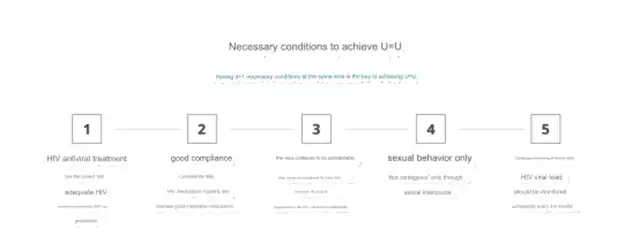Breaking Barriers: The Power of ‘U=U’ in Redefining HIV Transmission
- Normal Liver Cells Found to Promote Cancer Metastasis to the Liver
- Nearly 80% Complete Remission: Breakthrough in ADC Anti-Tumor Treatment
- Vaccination Against Common Diseases May Prevent Dementia!
- New Alzheimer’s Disease (AD) Diagnosis and Staging Criteria
- Breakthrough in Alzheimer’s Disease: New Nasal Spray Halts Cognitive Decline by Targeting Toxic Protein
- Can the Tap Water at the Paris Olympics be Drunk Directly?
Breaking Barriers: The Power of ‘U=U’ in Redefining HIV Transmission
- Should China be held legally responsible for the US’s $18 trillion COVID losses?
- CT Radiation Exposure Linked to Blood Cancer in Children and Adolescents
- FDA has mandated a top-level black box warning for all marketed CAR-T therapies
- Can people with high blood pressure eat peanuts?
- What is the difference between dopamine and dobutamine?
- How long can the patient live after heart stent surgery?
Breaking Barriers: The Power of ‘U=U’ in Redefining HIV Transmission
On July 22, 2023, the renowned medical journal “The Lancet” published a systematic review summarizing evidence related to the transmission of HIV with different viral loads.
The research findings indicate that for individuals with HIV whose viral load is below 1000 copies/ml, as long as they adhere to antiretroviral therapy, the risk of sexual transmission is almost zero. This study provides strong support for the global “U=U” (Undetectable = Untransmittable) movement.
Simultaneously, reducing the stigma associated with HIV and dispelling misconceptions and prejudices about the infectivity of HIV in the past brings more hope and inclusivity to those infected.
I. Mechanism of “U=U”
“U=U” stands for “Undetectable = Untransmittable,” meaning that if HIV is undetectable, it is non-transmissible.
Specifically, when individuals with HIV undergo proper antiretroviral treatment and their blood HIV viral load becomes undetectable (the virus is effectively suppressed) and remains so for at least a month, the risk of transmitting HIV through sexual activity is virtually zero.
Detailed research data:
- When the viral load is between 600-1000 copies/ml, the likelihood of HIV transmission is extremely low.
- When the viral load is below 600 copies/ml, no clear evidence of HIV transmission is found.
- When the viral load is below 200 copies/ml, the risk of HIV transmission is zero.
“U=U” is a relatively new concept, but it is backed by scientific evidence. In simple terms, it’s like putting 1 spoonful of salt in a pot of water; it won’t be salty. Similarly, with consistent antiretroviral treatment, the virus cannot replicate or reproduce, and the viral load in the blood decreases to undetectable levels, making bodily fluids non-infectious and eliminating the risk of sexual transmission.
In a sense, individuals with controlled HIV can enjoy a normal sex life without transmitting the virus, even in unprotected intercourse (though this is metaphorical and not encouraged).
II. Five Necessary Conditions for Achieving “U=U”
Early detection, early diagnosis, and early treatment not only help patients maintain good health but also effectively reduce the spread of the virus. When an individual with HIV undergoes standardized antiretroviral treatment, and if their blood shows no detectable HIV viral load for at least 6 months, they cannot transmit HIV to their HIV-negative partner.
To achieve “U=U,” the following conditions must be met:
- Antiretroviral treatment: Receive proper and adequate HIV antiretroviral treatment.
- Good medication adherence: Maintain good adherence to medication, consistently taking antiretroviral drugs to avoid missed doses, discontinuation, or unauthorized changes.
- Sustain undetectable viral load for at least 6 months.
- “Non-infectious” applies only to sexual transmission, excluding other transmission routes.
- Consistent viral load monitoring: Suggest testing every 3-6 months (with one free test provided annually by the government) to ensure a stable undetectable viral load. Only when two consecutive tests in 6 months are undetectable is it considered a true continuous undetectable viral load.

III. Can HIV be transmitted through other means when the “viral load is undetectable” in the body?
Yes. Different transmission routes require different minimum viral load levels for transmission. Even with a viral load as low as 12.7 copies/ml in blood transfusions, HIV can be transmitted. “U=U” specifically refers to sexual transmission routes and does not apply to other routes, such as those involving large fluid exchanges or transmission through veins (blood transfusion, intravenous drug use), as well as mother-to-child transmission (pregnancy, childbirth, and breastfeeding), among others.
While the risk of an individual with undetectable viral load transmitting HIV through sexual activity is negligible, it is crucial to continue using condoms to prevent other sexually transmitted diseases, such as gonorrhea, syphilis, genital warts, etc.
Sum up:
Public information indicates that antiretroviral treatment can lower viral load in the body, maintain immune function, reduce the incidence and mortality of HIV-related diseases, and slow down the progression of HIV.
With the continuous optimization of HIV treatment plans, standardized antiretroviral treatment can reduce the viral load in the bodies of HIV-infected individuals to very low levels, rendering them non-infectious.
Additionally, immune function restoration enables individuals to lead normal lives, including marriage and childbirth.
We advocate for “U=U” not to encourage individuals with virological suppression to engage in unprotected sexual activities but to encourage more HIV-infected individuals to actively cooperate with antiretroviral treatment, improve medication adherence, and undergo regular viral load testing.
Disease should not be defined by morality, and identity should not be defined by disease. By letting go of burdens and reducing self-blame, individuals can navigate future interpersonal relationships with greater confidence.
Life is full of hope, and things are getting better and better!
Breaking Barriers: The Power of ‘U=U’ in Redefining HIV Transmission
(source:internet, reference only)
Disclaimer of medicaltrend.org
Important Note: The information provided is for informational purposes only and should not be considered as medical advice.



